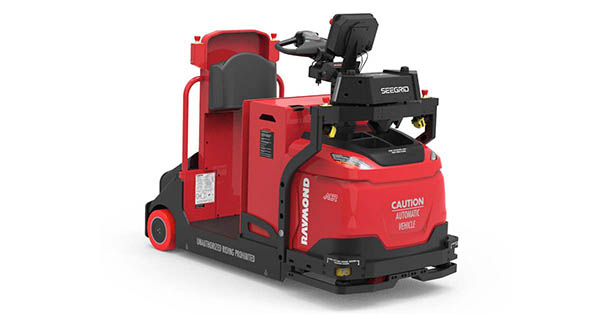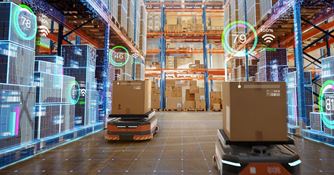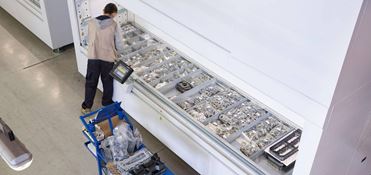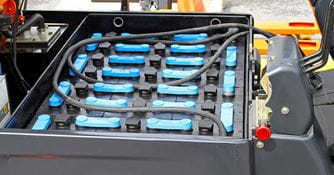-

Augusta Autonomous Guided Vehicles (AGVs)
Carolina Handling sells, installs and maintains Autonomous Guided Vehicles (AGVs) and other AS/RS equipment in Georgia and across the Southeast. Our automation specialists can help you find the perfect solution from world class AS/RS manufacturers like Modula.
Georgia Autonomous Guided Vehicle Supplier
What is an AGV?
Often known as self-guided vehicles or autonomous guided vehicles, automated guided vehicles (AGVs) are material handling systems or goods carriers that proceed autonomously across the floors of a warehouse, DC or production facility without an onboard worker.
What are Automated Guided Vehicles used for?
Common AGV applications include retrieval and storage in storage facilities and DCs, typically in support of order picking. They are similarly employed for transport of basic materials, work-in-process and finished goods in production centers.
What are a few of the primary benefits of Self-Guided Vehicles?
- Reduced Labor Costs: AGVs can considerably lower labor expenses. A one-time cost can get rid of the ongoing costs of salaries, taxes and benefits related to a full-time employee.
- Increased Safety: Contemporary AGVs use sophisticated cameras, lasers or other sensors that permit them to "see" and respond to their environment very quickly. Humans can become fatigued or distracted, whereas self-guided vehicles do not. AGVs can also be used in severe environments or around hazardous materials where human security is jeopardized.
- Increased Productivity & Accuracy: AGVs can work 24/7, never requiring breaks or becoming tired. They can make long treks around a warehouse effortlessly. They likewise do not make the types of mistakes that humans are prone to making.
- Modularity: most AGV solutions can be introduced gradually, replacing a few employees incrementally without an enormous capital outlay in advance. As automation needs increase, more AGVs can easily be introduced to the facility.
How do AGVs work?
AGVs are directed by a combination of sensor-based guidance systems and software. They can navigate safely through a storage or manufacturing facility by utilizing obstacle detection bumpers and following thoroughly defined paths while utilizing precisely regulated acceleration and deceleration.
AGV navigation is usually supervised by one of these types of systems:
- Vision guidance: Cameras record the AGV's surroundings, and the vehicles use these recorded videos to get around. Vision guidance is standalone, meaning no modification is needed to a production facility or warehouse infrastructure for this type of navigation.
- Laser target navigation: With laser solutions, reflective tape is mounted to racks, wall surfaces, posts and other fixed objects. AGVs utilize laser transmitters to rebound light off of these reflectors and then use the proximity and angle of items to navigate.
- LiDAR: LiDAR solutions transmit laser pulses to measure the distance around the AGV and items in its vicinity. This data is used to develop a comprehensive map of the surroundings. In similarity to vision guidance, no adjustment of a facility is necessary.
- Inertial navigation: Transponders embedded into a building's flooring guide AGVs along a specified course.
- Wired navigation: These systems use wire tracks embedded into a warehouse or factory floor. The wire broadcasts a signal that an AGV recognizes by means of a sensor or antenna system.
- Magnetic guide tape: This type of AGV makes use of magnetic sensors and follows a course laid out by magnetic tape.
What are the different types of Autonomous Guided Vehicles?
There are several types of automated guided vehicles. Lots of AGVs are similar to other human-operated vehicles yet are developed to function without continuous human intervention or guidance.
- Forklift AGVs: Forklift automatic guided vehicles are a commonly utilized kind of AGV in warehouses and distribution centers. They're designed to transport pallets without the need for a human operator.
- Automated Guided Carts: An automatic guided cart is the most basic kind of AGV. They can move all kinds of materials from entire pallets to small components. AGCs are frequently used in stocking, sorting and cross-docking applications.
- Tugger AGVs: Towing or "tugger" AGVs tug non-powered, payload-carrying carts behind them in a train-like setup. These kinds of automated guided vehicles are often utilized for moving heavy loads over long spans. Sometimes, they are programmed to make multiple pickups and drop-offs along their route.
- Unit Load Handlers: Unit load handlers carry solitary payloads like particular articles or a discrete pallet or tote.
- Heavy Burden Carriers: These are used for extremely heavy weights like plates, castings or coils.
Automated Guided Vehicle Supplier Near Me
If you'd like a complete analysis of AGV opportunities for your warehouse, DC or production center, you can talk to a professional at Carolina Handling.
-
-
Proudly serving
Augusta, Thomson, Waynesboro,
Sandersville, Milledgeville,
Macon, Warner Robins,
Dublin, Swainsboro,
and the entire State of Georgia.
You May Also Like:

Autonomous Mobile Robot (AMR) - Augusta
Carolina Handling sells and services Autonomous Mobile Robots (AMRs) in Augusta and throughout the State of Georgia.
Learn More

Conveyor Systems - Augusta
Carolina Handling sells and services Conveyor Systems in Augusta and throughout the State of Georgia.
Learn More

Vertical Lift Module - Augusta
Carolina Handling sells and services Vertical Lift Module (VLM) systems in Augusta and throughout the State of Georgia.
Learn More

Forklift Repair - Augusta
Carolina Handling sells and services forklifts in Augusta and throughout the State of Georgia.
Learn More

Forklift Battery - Augusta
Carolina Handling sells and services forklift batteries in Augusta and throughout the State of Georgia.
Learn More


